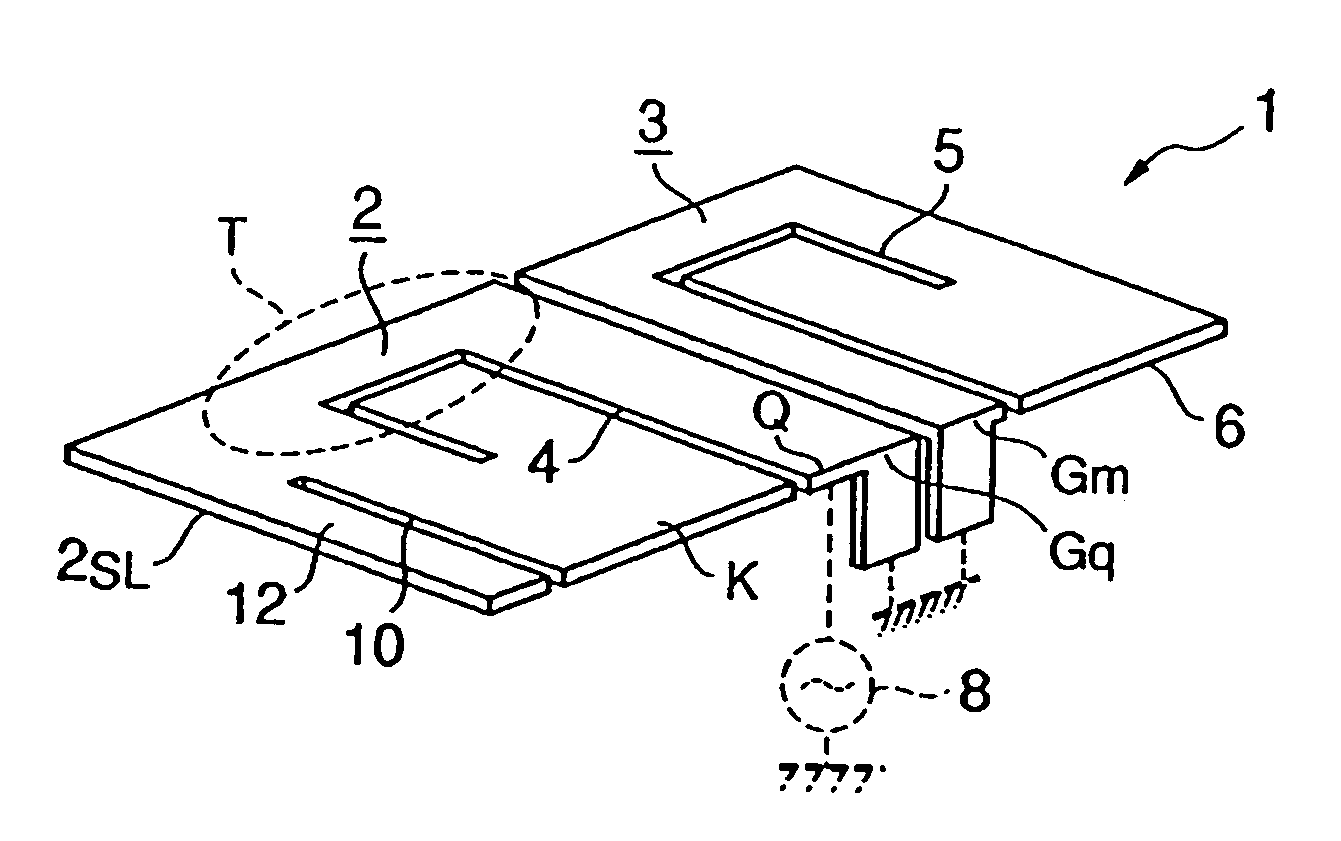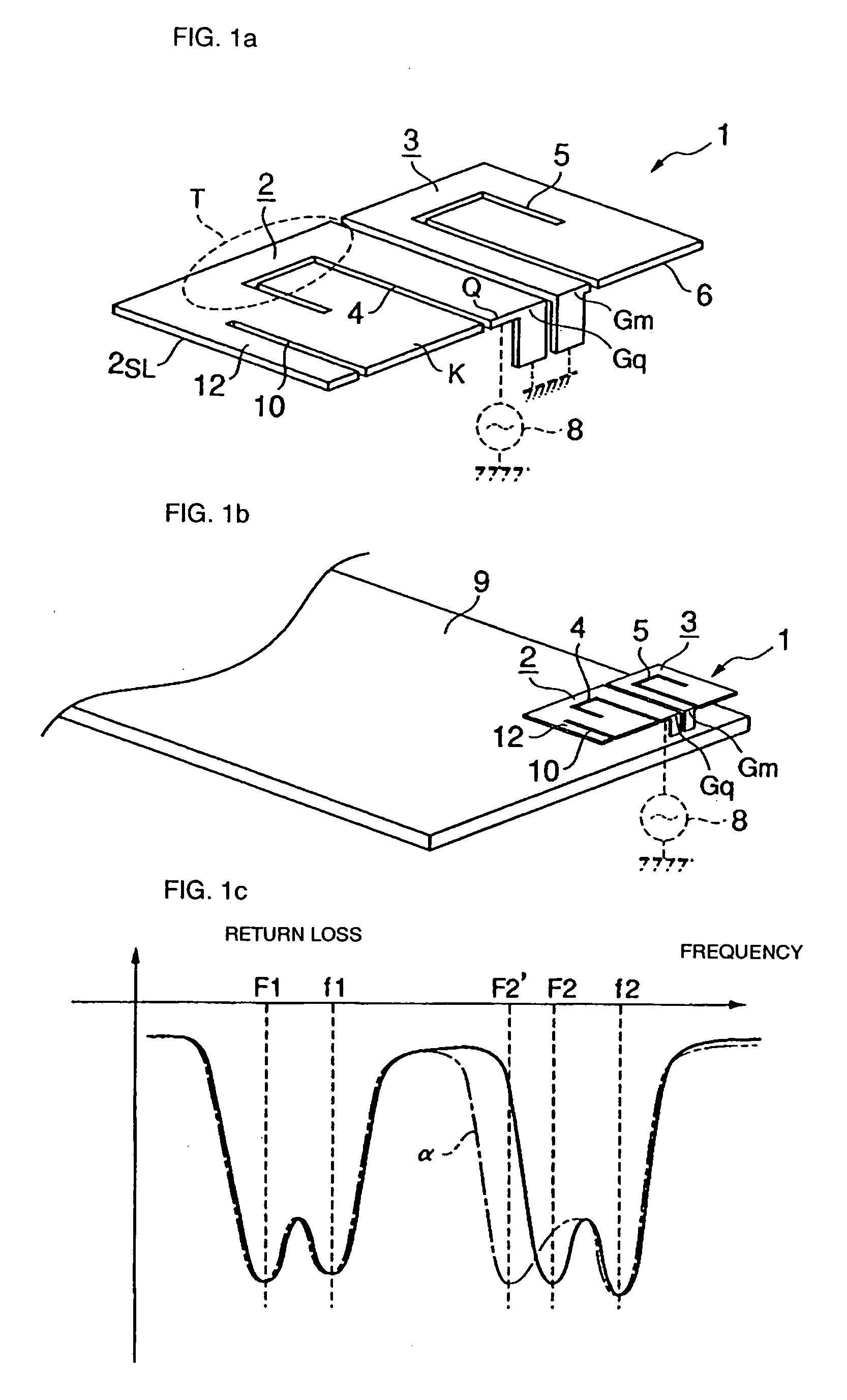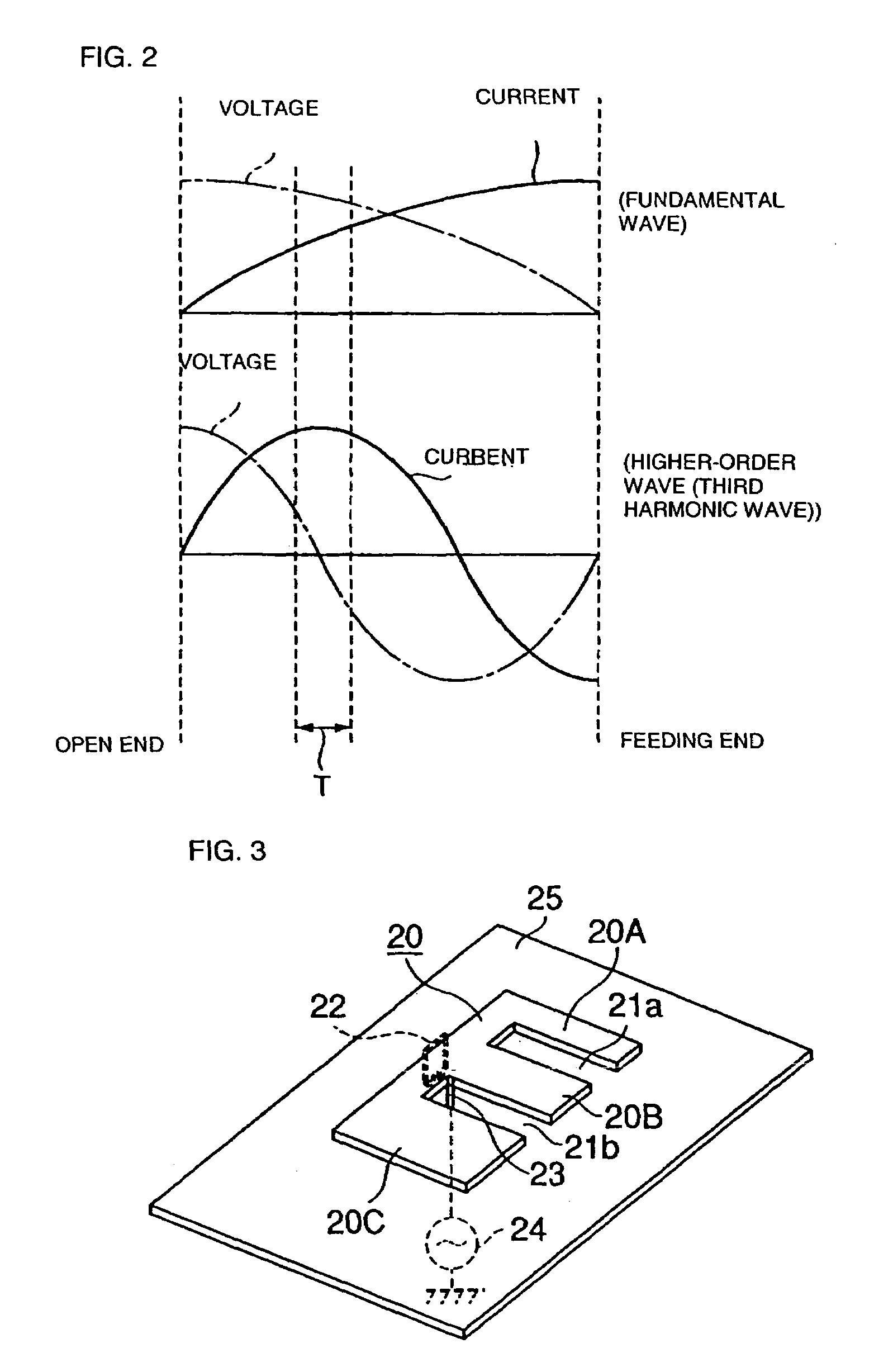Antenna structure and communication apparatus including the same
a communication apparatus and antenna structure technology, applied in the direction of resonant antennas, separate antenna unit combinations, radiating element structural forms, etc., can solve the problem of not being able to lower only the higher-order resonant frequency fb>2, and it is difficult to individually control the fundamental resonant frequency fb>. problem, to achieve the effect of shortening the wavelength, reducing the area of the circuit substrate occupied by the antenna structure, and miniaturization
- Summary
- Abstract
- Description
- Claims
- Application Information
AI Technical Summary
Benefits of technology
Problems solved by technology
Method used
Image
Examples
first embodiment
[0050]The antenna structure 1 includes the feeding radiation electrode 2 and the non-feeding radiation electrode 3. For example, as shown by the return loss characteristics represented by the solid line in FIG. 1c, the antenna structure 1 is capable of performing radio communication in four resonant frequency bands, that is, a fundamental resonant frequency band on a feeding side based on the fundamental resonant frequency F1 and a higher-order resonant frequency band on the feeding side based on the higher-order resonant frequency F2 of the feeding radiation electrode 2 and a fundamental resonant frequency band on a non-feeding side based on the fundamental resonant frequency f1 and a higher-order resonant frequency band on the non-feeding side based on the higher-order resonant frequency f2 of the non-feeding radiation electrode 3.
[0051]In addition, as shown in FIG. 1b, the feeding radiation electrode 2 and the non-feeding radiation electrode 3 are provided, for example, at an en...
second embodiment
[0063]In the second embodiment, as shown by a model diagram of FIG. 5, the feeding radiation electrode 2 has a shape in which the open stub 12 is bent toward the circuit substrate 9 in accordance with a virtual extension line β of the sub-slit 10 shown by a dotted line in FIG. 5.
[0064]In the second embodiment, since the open stub 12 is a portion that is not involved in radio wave radiation, the open stub 12 can be bent without considering deterioration of a radio wave radiation state. Due to bending of the open stub 12, the area of the circuit substrate 9 occupied by the antenna structure 1 (the feeding radiation electrode 2) can be reduced (that is, the antenna structure 1 can be miniaturized). The other structural features are similar to those in the first embodiment, and advantages similar to those of the first embodiment can be achieved.
[0065]A third embodiment is described next. In the explanation of the third embodiment, the same parts as in the first and second embodiments ar...
third embodiment
[0066]In the third embodiment, as shown in FIG. 6, the distance D between outline sides 2SR and 3SL, which face each other, of the feeding radiation electrode 2 and the non-feeding radiation electrode 3 that are adjacent to each other increases in a direction from the short-circuited portions Gq and Gm of the outline sides 2SR and 3SL toward an end E opposite to the short-circuited portions Gq and Gm.
[0067]The other structural features are similar to those in the first and second embodiments. In the example shown in FIG. 6, an example when the structure of the third embodiment is applied to the structure shown in the first embodiment is illustrated. However, the structure of the third embodiment may also be applied, for example, to the antenna structure 1 shown in the second embodiment in which the open stub 12 is bent.
[0068]Advantages similar to those in the first and second embodiments can be achieved in the third embodiment. In addition, the third embodiment achieves an advantage...
PUM
 Login to View More
Login to View More Abstract
Description
Claims
Application Information
 Login to View More
Login to View More - R&D
- Intellectual Property
- Life Sciences
- Materials
- Tech Scout
- Unparalleled Data Quality
- Higher Quality Content
- 60% Fewer Hallucinations
Browse by: Latest US Patents, China's latest patents, Technical Efficacy Thesaurus, Application Domain, Technology Topic, Popular Technical Reports.
© 2025 PatSnap. All rights reserved.Legal|Privacy policy|Modern Slavery Act Transparency Statement|Sitemap|About US| Contact US: help@patsnap.com



